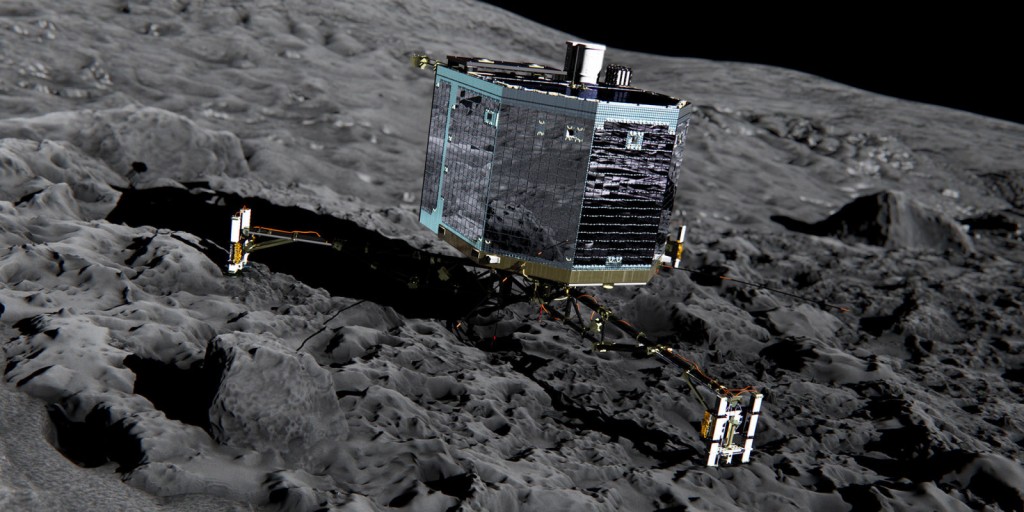ESA – The German Scientists stated that The Philae Lender which touched down on the surface of a faraway comet last November is still sleeping. It entered into a phase of deep slumber after its power ran out due to rough landing. There were issues with the Philae’s landing system due to which it bounced […]
ESA – The German Scientists stated that The Philae Lender which touched down on the surface of a faraway comet last November is still sleeping. It entered into a phase of deep slumber after its power ran out due to rough landing. There were issues with the Philae’s landing system due to which it bounced out if its target place, settling in a area that had little sunlight. Philae needs sunlight to activate its solar panels.
Before entering into sleep mode, Philae sent data to the Rosetta orbiter for almost two days. It is expected to stay in sleep mode till the time it receives ample solar radiation to activate again.
The expert team of the German Aerospace Center said that the lander is receiving about twice as much solar radiation as it was in November. However, it appears to be in sleep mode as repeated attempts to contact Philae have yielded no results.
The scientists are positive to see the lander wake up from its sleep mode soon. Stephan Ulamec, the project manager said, “It was a very early attempt. We will repeat this process until we receive a response from Philae. We have to be patient.” The team will contact Philae in early April as it seems to be the next good chance during which the probability of success is high.
Back in November, after a seven-hour descent, Philae lander made an exceptional touchdown on the surface of a faraway comet. It touched a record high point of a massive $1.3 billion, 10-year mission. It was released by ESA’s car-sized Rosetta spacecraft.
The lander sent all the science data the ESA team wanted in the first two days. It even sent the pictures from the surface. The first signals took almost 28 minutes to travel at the speed of light over 510 million kilometers. For first two days, it was stable on the comet surface and later entered into sleep mode.


Leave a Reply